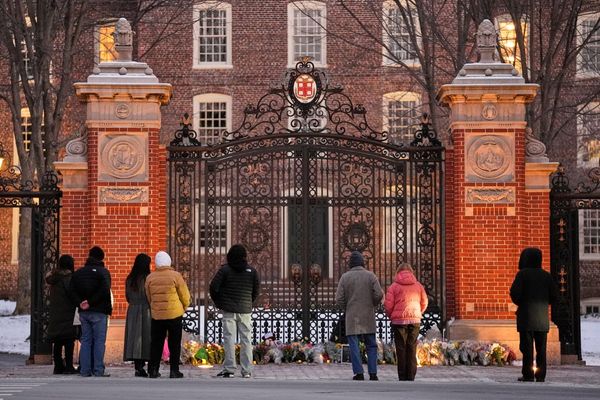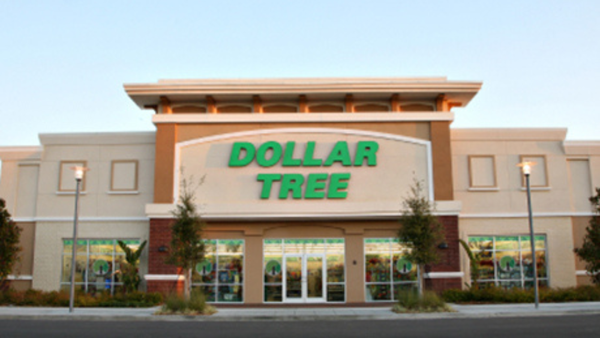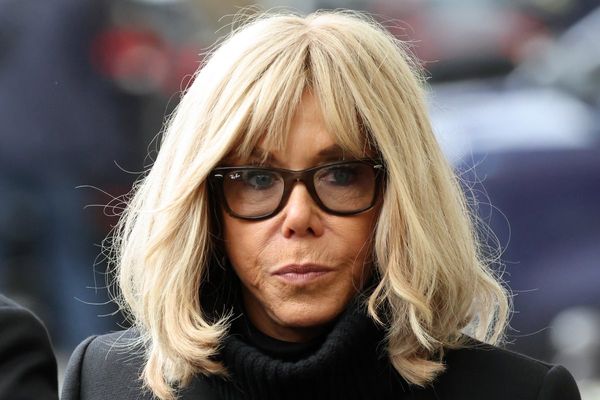
“I acknowledge we’re losing money,” comedian Jon Stewart told viewers this week. “Late-night TV is a struggling financial model. We are all basically operating a Blockbuster kiosk inside a Tower Records.”
The remark did not dull Stewart’s righteous anger about his friend Stephen Colbert’s show being cancelled by CBS after its parent company Paramount settled a lawsuit with Donald Trump – and a week before Paramount’s $8bn merger with Skydance was approved by federal regulators.
Stewart did, however, point to another truth about the decline of a format that has been part of America’s cultural fabric for three-quarters of a century.
Late-night TV serves a nightly supper menu of comic monologues, variety sketches, celebrity interviews and musical acts. It turned hosts such as Johnny Carson, Jay Leno, David Letterman, Jimmy Fallon, Jimmy Kimmel, Conan O’Brien and Colbert into a familiar and reassuring presence in millions of homes. It was also relatively cheap to make and offered lucrative returns from advertising, representing a cash cow for major networks.
Stephen Farnsworth, a co-author of Late Night With Trump: Political Humor and the American Presidency, says: “It was a comforting collection of lighter fare before bed. It was for people who work second shifts in factories, people who just wanted a joke or two and a celebrity interview before they drop off. It was a cultural experience back in the days of Carson where you had one show that dominated above all and it had those moments that people would talk about the next day at work.”
Not any more. The late-night format has been struggling for years as viewers increasingly cut the cable TV cord and migrate to streaming. Younger people are more apt to find amusement on YouTube or TikTok, leaving smaller, ageing TV audiences and declining ad revenues. Whereas the Late Show might once have raked in about $100m a year, it now reportedly loses $40m a year – giving CBS a convenient pretext to pull the plug and claim it was “purely a financial decision”.
Farnsworth, the director of the Center for Leadership and Media Studies at the University of Mary Washington in Fredericksburg, Virginia, adds: “The big problem with late-night comedy in recent years is the problem with all traditional media in recent years. When you move to an online environment with podcasts and on demand, it’s hard to get people to pay attention in a place where the ad rates are the highest.
“There are plenty of people watching Colbert clips throughout the day on all kinds of platforms. But when you’re talking about advertising revenue, it’s mainly the eyeballs fixed on this TV screen. That’s where the money is made, but it’s also where the decline has been the greatest.”
Late-night TV began in the 1950s as the postwar consumer boom made TV sets widespread, including in many bedrooms. Networks saw potential in late-night slots to capture audiences, especially younger viewers and urban professionals.
The first notable show was Broadway Open House on NBC, created by Sylvester “Pat” Weaver (the father of the actor Sigourney Weaver). Airing from 11pm to midnight, it introduced a casual, variety-style format with comedy, music and guest interviews, setting the template for future shows.
The definitive late-night programme was The Tonight Show, premiering in 1954 on NBC with host Steve Allen, whose wit and improvisational style were so successful that he got moved to prime time. His successor Jack Paar added emotional depth and conversational interviews during his five-year reign.
Then came Carson, whose 30-year run solidified The Tonight Show as a cultural institution, pulling in between 10 million and 15 million viewers a night at its peak. Born in Iowa and raised in Nebraska, Carson’s charm went well beyond coastal cities to middle America. He interviewed presidents, performed impressions of them and told jokes at their expense but wore his own politics lightly.
Farnsworth comments: “They were jokes that never were biting. A joke about Ronald Reagan being a little confused is hardly the same thing as the kind of fare that’s provided today. But it’s important to remember that was a tamer time in American politics too. As America has gotten more partisan and voters and politicians themselves have gotten much harsher, late-night comedy has reflected those changing realities.
“I don’t think Carson would be anywhere near as successful today. His relatively tame approach to humour would strike a lot of contemporary viewers as out of touch in the same way that, had Colbert been on the air in the 80s, he wouldn’t have gotten very far.”
Carson’s success inspired competitors including CBS, which launched The Late Show with David Letterman in 1993. The Daily Show, a spoof news programme with mock reporters, began on the cable network Comedy Central three years later.
Under Stewart, the Daily Show gave late-night a satirical edge, exposing the hypocrisy of politicians and the media with lacerating commentary and smartly edited video clips. A spin-off, The Colbert Report, was a searing parody in which Colbert played an exaggerated, bombastic version of a conservative news host and coined the term “truthiness”.
Bill Carter, the author of the book The Late Shift and executive producer of the CNN docuseries The Story of Late Night, says: “Jon Stewart, more than anyone else in that era, brought point of view to what he did, certainly more than Letterman and Leno ever did. Young people loved it. He was breaking news to them. They didn’t pay attention to news; they watched his show and they’d find out things from watching his show.”
Among that generation was Tyler Hall, 36, who recalls growing up inspired by the Daily Show’s iconoclastic take on the 2003 Iraq war. He says from New York: “That was so appealing, to think that you can speak with moral authority while still being fun and funny and not preachy and shouty. It felt like a dream to put a finger in the eye of people who were oppressing and causing harm.
“I’ve always thought there was something kind of punk rock about Colbert tricking people in his interviews in those early days because they thought he was for real, or Jon Stewart spitting back in people’s faces their own video clips. It felt badass. The teenage version of me wanted to be part of it and was fortunate to be part of it.”
Hall got a job as as a researcher at The Colbert Report and followed Colbert to The Late Show in 2015. Even as Stewart stepped away from the Daily Show to make way for the South African comedian Trevor Noah, his legacy lived on as proteges such as Samantha Bee, Jordan Klepper, John Oliver, Larry Wilmore and Roy Wood Jr forged their own paths.
Hall reflects: “There was certainly an abundance, a diversity, you could even say, a glut of these late-night political shows. There would honestly be times where we could all accidentally write the same punchline off the same thing of the day. We didn’t know what the other one was writing, but inevitably enough of the same smart people writing on the same topic bang out the same basic joke.”
Having initially struggled with the transition to a major network, appearing as himself rather than a character, Colbert found his voice in the era of Trump. His nightly monologues skewering the president are sardonic, silly, smart, snarky and sublime, an invaluable body of work for future historians seeking to understand the decade when America lost its mind. They also carry a rare moral force.
David Litt, a former speechwriter for Barack Obama whose books include It’s Only Drowning, says: “What stood out was Colbert’s kindness as an individual and his public persona as an upstanding citizen. That stands in real contrast to Donald Trump. Colbert was the personification of the idea that people who believe in basic decency have a natural inclination toward saying: ‘I want nothing to do with Trump and I have no interest in bending the knee.’
“The Maga frustration with Colbert was you had this person who was a religious Catholic from South Carolina, in many ways not easy to dismiss as a coastal elite or crazy socialist. And what he was saying is that it is deeply American to oppose this man and to find what he’s doing both ridiculous and abhorrent.”
The Late Show became the most watched late-night programme with ratings peaking at 3.1 million viewers during the 2017-18 season, according to Nielsen data. But not even Colbert was immune to the tectonic plates shifting beneath the format. In the season that ended in May his audience averaged 1.9 million. The show’s ad revenue plummeted to $70.2m last year from $121.1m in 2018, according to the ad tracking firm Guideline.
Carter, who has written four books about TV, is not surprised. “It’s of a piece with the end of linear TV,” he says. “The regular primetime programming that’s on the old traditional networks has faded to the point where the ratings stagger me how small they are. It’s like a pond that’s shrinking in the sun. It’s getting smaller and smaller.
“CBS has made the point that they were losing money and we have to believe them; I’m sure they have finances that show that. But it didn’t look to me like they did a whole lot to counter that.”
Carter notes that some late-night shows have saved money by ditching their live band or reducing the number of nights they broadcast. But CBS, whose parent company was accused by Colbert of paying a “big fat bribe” to Trump just three days before the cancellation, made little effort to adapt or save the format.
“I don’t know exactly how they handled this, but the shows became somewhat bloated. When Colbert talked about this last week, he said I want to thank the 200 people who work on the show, and one of Letterman’s former producers spoke to me and said: ‘They have 200 people on their show?’ The shrinkage was happening but it didn’t look like CBS was doing that much that I could see until they totally pulled the plug.”
Indeed, CBS appears to be ready to give up on late-night. When The Late Late Show host James Corden left in 2023, the network opted not to hire a replacement. The network also cancelled After Midnight this year after host Taylor Tomlinson chose to return to full-time standup comedy.
Late-night comedians have followed their younger audiences online, releasing clips to YouTube or TikTok. But digital advertising does not make up for the lost TV ad revenue.
Carter observes: “They have very big subscriber bases. Jimmy Kimmel of ABC and Jimmy Fallon of NBC both have over 15 million to 20 million people subscribe to their TikTok or YouTube channels. That’s an enormous number of people but they have not been able to monetise that.
“People watch it whenever they feel like it, which is the way television works now. It’s very hard, if you’re not compelled to watch something, to then commercialise it. How do you get commercials into that? In the past, people would sit through the commercials with Johnny Carson and wait till he came back. People try to avoid commercials now.”
He adds: “It isn’t like the idea of late-night is bad or weak or old or used up. It’s that the distribution method has changed so dramatically that making money off the old format is very difficult.”
Farnsworth agrees: “The shows haven’t failed. The shows have kept up with the changing preferences but you simply don’t get the same advertising revenue online that you do with over-the-air broadcasts.
“These are shows that draw millions of viewers every evening, not to mention millions of more viewers through other platforms. There’s an audience for this. It may not be as big as it was, but no audience is. There’s nothing that television could do to recreate must-see TV or the popularity of All in the Family or M*A*S*H today. People just don’t consume media the same way.”
He concludes: “Ultimately the strategy for the remaining shows is living with less. You’re going to have to figure out ways to cut the staff, maybe air fewer nights a week. This is definitely a warning signal for the genre of late-night humour. But it’s not a death knell.”







